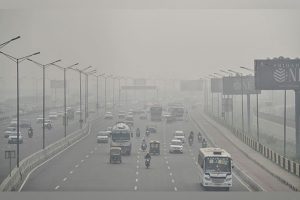The groundwater quality of Haryana has been continuously depleting over the past few decades. Haryana Water Resources (Conservation, regulation and management) Authority has put 26 per cent of villages under severe groundwater stress zone, whereas 15 per cent and 26 per cent respectively are classified as moderate and potential groundwater stressed zones.
In 1943, India had seen the worst food crisis, referred to as ‘The great Bengal Famine’ where about four million people lost their lives. The solution came with the Green revolution. It started in 1965 under the government of Lal Bahadur Shastri and continued till 1977 under the guiding hand of Dr. M. S. Swaminathan. Dr. Swaminathan, often called the father of green revolution in India, was an agricultural scientist and a great administrator.
In this period, chemical fertilizers, pesticides, modern agricultural instruments, better irrigation systems and high-yield varieties of crops were introduced. The Green revolution increased crop production especially in Haryana, Punjab, Rajasthan and Uttar Pradesh. These northern states of India were in the frontline of the revolution. The objective was to make India self-sufficient in food grain production. This reduces the instances of famine but comes with a price of soil degradation, and ground water depletion. This steadily shifted the whole agricultural pattern of the nation.
Haryana contributes 14.1 per cent of India’s agricultural GDP. Rice and wheat are two major crops cultivated in both the summer and winter seasons in different districts of the state. Over 18 districts of Haryana produce rice, with a net average yield of 2,393 kilograms per hectare, which is significantly higher than the average national rice productivity of 1,947 kilograms per hectare. In the years from 2014 to 2019, paddy production in the state jumped from 39.8 lakh tonnes to 45 lakh tonnes.
Traditionally, these Northwestern parts of India have intensive wheat, maize, and millet cultivation. That was replaced with water-intensive paddy as it is more profitable for the farmers. Farmers of the states are dependent on the monsoon rain, canal and groundwater for irrigation. Western Yamuna, Agra, Bhakra and Ghaggar canals are four major irrigation systems of the state. The groundwater fulfills 80 per cent and 60 per cent requirement of drinking and irrigation water respectively. Research suggests that an exponential growth in the rice production in Haryana is the major reason for depleting groundwater table of this region.
An estimate suggests that the production of 1 kg of rice consumes about 3,000-5,000 litres of water. A 10-year study on the groundwater depletion pattern in different areas of Haryana suggested that the groundwater table of the state is depleting in a range of 0.03- 1.12 meter per year. Wells of most of the districts of Haryana have dried up. The water level fell over 30 meters in 1780 villages. This alarming depletion of the groundwater table indicates the huge water crisis in the future. To cope with this issue, an initiative was taken by the Haryana Government on 6 May 2020.
Called the “Mera Pani Meri Virasat” scheme, it grants assistance to farmers to the tune of Rs 7,000 per acre of land to quit paddy cultivation and shift to pulses or low water demanding crops. The motive of this scheme was to diversify about 1 lakh hectare area from rice cultivation to another crop. Drip and micro irrigation system was also promoted by the government to provide 85 per cent subsidy in the severely water stressed zones of the state. For this, the government allocated Rs 435 crore in 2018.
Another scheme called Survey of villages and mapping with improvised technology in village areas (SVAMITVA) was launched in 2020. It works for rejuvenation and construction of ponds in different villages of Haryana. A large group of farmers are not aware about these schemes while a few want the incentive raised from Rs 7,000 to Rs 20,000 per acre. Awareness among farmers is mandatory to save these precious natural resources which will be depleted soon in Haryana. As many as 85 blocks out of 141 are overdrawn. Special focus and strategic plans on the crop cycle and water harvesting process need to be prioritized by policy makers.
Rainwater harvesting and recycling of wastewater can slow down groundwater depletion trends, but it needs proper implementation. Apart from these measures, village, district and block level awareness programmes will also be helpful to avoid extreme circumstances of water scarcity. The Centre and the state should work together to identify suitable solutions to ensure that existing water saving schemes are successful, and to promote awareness among farmers. Otherwise, the future generations will be deprived of their ‘right to clean water’.
(The writers are, respectively, an independent researcher and Dean at Jindal School of Environment and Sustainability, O.P. Jindal Global University, Sonipat, Haryana, India.)












